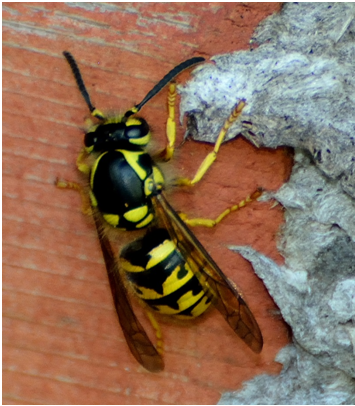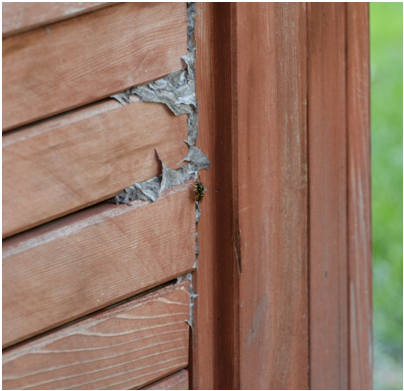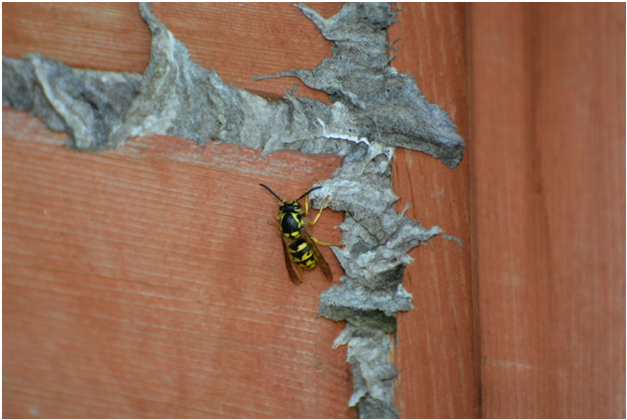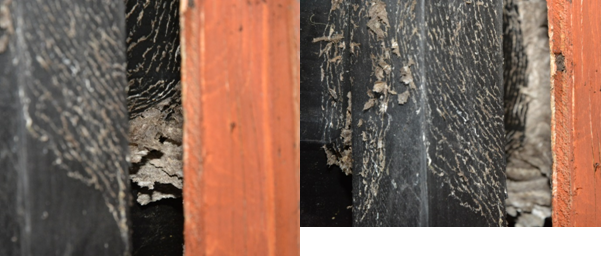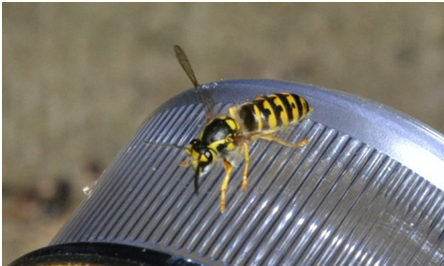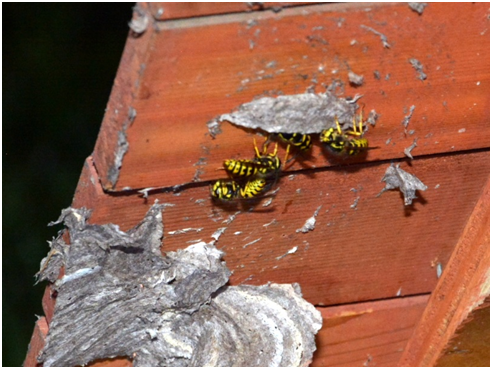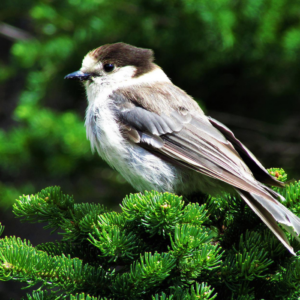Nature at My Doorstep
Sometimes the wild comes a-knocking…
A Stinging Visitor Dilemma
There is just something wrong with opening the door and getting hit by a wasp…and then another, and another.
The nature on the doorstep isn’t always a mammal or bird, but generally, we don’t worry about the insects and spiders – they are in balance in our yard, so the occasional unwanted guest is tolerated. Unfortunately, when the nature at your doorstep can cause injury, action is warranted.
Assess the situation
After being “bombarded” I quickly realized that I must be near a wasps’ nest. I stepped outside, and stood (like a fool) looking up to see if I could spot the nest in the rafters above me. As I stood, I continued to be hit by the wasps, but not stung. This is a typical behaviour for yellowjackets as a proximity warning. As more of the wasps hit me, I finally looked down and spotted the grey paper of their nest peeking out from our hot tub surround. Not good news – this could be a big nest. Wasp colonies can number in the thousands, and stings can be painful and dangerous, especially when a person is stung multiple times.
Course of Action
Deciding how to deal with a wasp’s nest in proximity to a doorway is probably a “no-brainer” for many people, but from an environmental perspective, ridding an area of an insectivore and important food source for other organisms isn’t the most desirable course of action. Ideally, if the nest can be tolerated until winter, it is preferable to leave it. So, how do you decide what to do?
1. Positively identify the organism, if time permits. This allows you to know how much of a concern it is, and also the best way to deal with it. a. In this case, the wasp was Dolichovespula arenaria, commonly known as the “aerial yellowjacket.”
2. Determine injury potential to humans and domestic animals.
a. Is the nest in an area that can be avoided until winter?
b. Is the nest likely to be disturbed, accidentally, by you, your family, or visitors to your home?
Once you know what the organism is, and that it can be aggressive, if your answer to the second question leads to human injury, the nest needs to be removed.
In our case, the injury potential was high, so we needed to take action.
Do the Least Amount of Harm
Removing an aerial wasps’ nest should be an easy task. They are generally attached by a single stock and breaking that stalk frees the nest. If this is done at night, or when it is cold outside, the wasps are less active, and the task is easy. We have done this many times. Unfortunately, that was not our current scenario.
The wasps had chosen to build their nest vertically attached and integrated into an access door for a hot tub. We had to remove the door to access the nest.
The rings in the photos show where each layer was attached and wrapped around the support post. Due to the structure of the nest, it wasn’t possible to remove the nest without using chemicals.
Choosing a pesticide should be done in consideration of the task, but also with sensitivity to the surrounding environment and other organisms. Chemicals that are toxic to one insect are generally toxic to other organisms too. Clean up is also a consideration to minimize exposure of humans, pets and other organisms. Be sure to do your research before reaching for the most popular brand.
A Happy Ending… for almost everyone.
With the wasp nest mostly destroyed and removed, and the toxic chemicals removed, we called it a day. I returned after dark to ensure that the nest was inactive. To my surprise, there was a significant number that had returned. Unfortunately, we had not been able to clean everything, and the industrious wasps had returned to do repairs! I guess we will need to do more to remove all vestiges of the nest. I have to admit…I am happy some survived, but I would be happier if they found a different location to call home!
 This article was contributed by guest blogger, Shauna Stevens.
This article was contributed by guest blogger, Shauna Stevens.
Born and raised a nature lover in Edmonton, Alberta, Shauna now lives near Chickakoo Lake in Parkland County, Alberta. A science teacher by profession, Shauna’s hobby time is spent tending and photographing the nature surrounding her. “Moving from the city to a rural area has been an eye-opener, and has provided me with unbelievable learning experiences that can be applied no matter where you live.”
Shauna’s photography work can be found at shaunastevens.500px.com. You can also connect with her on Twitter at@shaunashome or on Facebook at facebook.com/ShaunasHome.

